By Henrik Lunde
Operation Bagration, the largest operation of World War II, has never been adequately acknowledged in the West to the same extent as a number of smaller campaigns. A few very recent books may be an indication that its importance is finally beginning to be recognized.
While it dwarfed all other operations, it lacked a dramatic and popular focal point like Normandy, Stalingrad, or Leningrad––which have been written about more extensively. It took place at a time when the Western Allies were still engaged in Operation Overlord––the fighting in Normandy’s hedgerow country inland from the beaches––the landings in southern France, the dash across France, and the ongoing struggle in Italy. These have received the preponderance of attention while the near destruction of three German army groups on the Eastern Front has been relegated to a few paragraphs or pages in the more popular accounts of the war in the East. But Bagration was too large and important to ignore or minimize.
Background
The political scene for the Soviet 1944 Summer Offensive was set at the meeting between Roosevelt, Churchill, and Stalin at Tehran in December 1943. Many subjects of great importance were covered at this conference, the most important being their agreement to orchestrate future operations against Germany in 1944. Churchill and Roosevelt informed Stalin that they intended to open the long-awaited second front by landing in France in May 1944. In turn, Stalin promised to support this operation by launching a massive strategic offensive of his own.
Planning for the Belorussian Offensive, as Bagration is also known, began in the spring of 1944. Knowledge of the operation was severely limited to the five or six officers working on the plan. It was decided to launch the offensive on June 22. While this had symbolic importance since it marked––to the day––the three-year anniversary of the German invasion (Operation Barbarossa), it can be safely assumed that the practical Stalin had other reasons for delaying his offensive for a month after the announced date for the Allied landings in France.
The Soviet armies involved in bloody fighting during the winter and early spring had made spectacular advances, particularly in the south. They had also driven the Germans away from the immediate area around Leningrad. The armies needed time to reorganize and resupply before undertaking another major effort. Stalin was also skeptical about the planned American-British landings in France. By delaying his own strategic offensive, it gave him a chance to see how that operation developed before beginning his own offensive in Belorussia.
If the Normandy landings were successful, they might draw off German forces from the East and the delay would thus benefit the Soviets. However, after the landings, the Western Allies were still almost 1,100 kilometers from Berlin and the eastern bulge of Germany’s Army Group Center was 1,200 kilometers from Berlin. The distance from the rail-junction city of Orsha––still in German hands––to Moscow was roughly 400 kilometers.
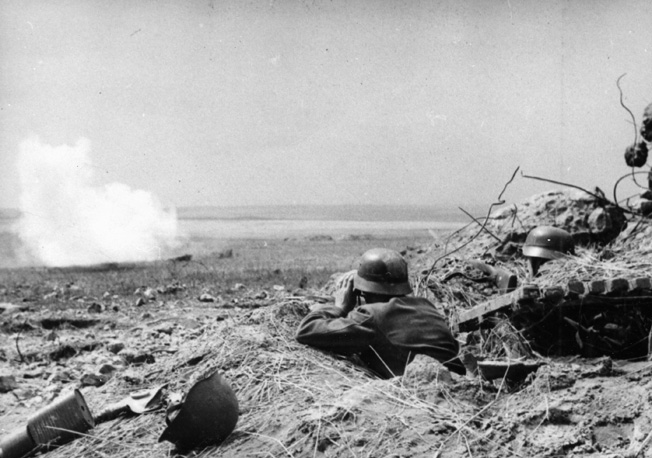
While the German Army in 1944 was only a shadow of what it was in 1940-41 in terms of troop quality and leadership, it was still a potent force. If the landings in France ended in a fiasco, Stalin had to assume that the Germans would move the bulk of their 50 infantry and 10 armored divisions then in France and the Low Countries to the Eastern Front; a resurgent Wehrmacht with a major victory under its belt would be tough to deal with. The prospect of having to cope basically alone with Germany for another year or two must have given Stalin pause.
Such redeployment would also alter the space/force ratio, an often-overlooked element that increasingly plagued the Germans. As the German armies in the East were bled white from 1941 to 1944, the space/force ratio increasingly swung to the advantage of the Soviets, and that could only change by a significant increase of German forces or a withdrawal to shorter defensive lines. As the Germans were forced back to Poland and the German border, the Soviet planners were no doubt aware that the space/force ratio would change to the advantage of the Germans.
The Military Situation
The Soviets had 12 fronts (army groups) facing the Germans and their allies along a 3,200 kilometer front. The strength of the Soviet Army on the Eastern Front in the spring of 1944 stood at 6,077,000. The Germans had four army groups and an independent army with a total strength of 2,250,000 facing these fronts.
Army Group Center was commanded by Field Marshal Ernst Busch, not a particularly capable commander. His appointment was due primarily to his unquestioned loyalty and obedience to Hitler. His forces occupied a huge bulge extending eastward north of the Pripet Marshes close to the headwaters of the Dvina and Dniper Rivers east of Vitebsk––the historic Russian invasion gate. Both sides referred to this bulge as the “Belorussian Balcony.”
This salient developed as a result of the misfortunes of the neighboring German army groups, particularly the disastrous events that occurred in the southern sector in the wake of Stalingrad, Kursk, and the withdrawal from the Caucasus. The Soviets had advanced to the border of Romania and past Kovel near the Polish border in northwestern Ukraine, while Army Group North was driven away from Leningrad to Lake Peipus.
While numerically the strongest army group on the Eastern Front––slightly over 700,000 troops in 51 divisions, including reserves and rear security divisions––it held the longest front by far: about 780 kilometers. It was, therefore, a thinly held line that its four armies occupied––Second, Ninth, Fourth, and Third Panzer. By comparison, Army Group North Ukraine occupied a front of 350 kilometers with 45 divisions (including 10 Hungarian). The space/force ratio was therefore much greater in the Army Group Center area.
The air support resources were also out of balance between Army Group Center and Army Group North Ukraine. The Sixth Air Fleet which supported Army Group Center had 775 aircraft, but 405 of these were long-range bombers of limited value in support of defensive operations. The Fourth Air Fleet supporting Army Group North Ukraine had a total of 845 aircraft, of which 670 were fighters or ground support aircraft.
The air situation was actually worse than depicted by raw numbers. According to Fourth Army commander General Kurt von Tippelskirch, there were only 40 German fighter aircraft flyable in the Sixth Air Fleet on June 22, and there was insufficient gasoline to keep them in the air.
Soviet Strategic Planning
STAVKA (Soviet High Command) had not settled on striking at the Balcony without considering other options. One option studied was a strike into the Balkans, a continuation of the successful drive earlier in the year that brought the Soviets into northeast Romania. This option was rejected because it would leave much of western Russia in German hands and dangerously expose the northern flank.
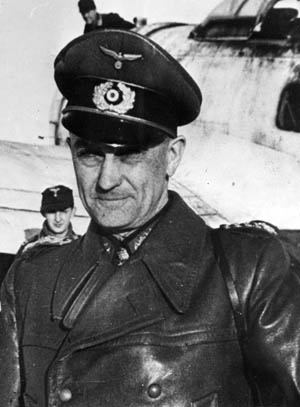
A second considered option called for a northwest strike from northern Ukraine across Poland to the Baltic Sea. This was promising as it could result in trapping both Army Group Center and Army Group North. But it was ultimately rejected because it was a long and perilous drive with dangerously open flanks and viewed as beyond the Soviet Army’s logistic and maneuvering capabilities.
In April 1944 STAVKA settled on attacking the Balcony with the strategic objective of destroying Army Group Center. Success would bring the Soviets to the border of Poland and East Prussia—an ideal position for future operations. Pressure, meantime, would be maintained on other fronts.
The Eastern Intelligence Branch of the OKH (German Army High Command) made its own examination in early May of Soviet options. One was almost identical to the second option considered by the Soviets––a drive from Kovel in a north-northwest direction. The OKH rejected it for much the same reasons as the Soviets. The second option given serious consideration by OKH involved a Soviet offensive through Romania and Hungary into the Balkans.
While the Soviet and German appraisals were similar, they differed in their all-important conclusion. The Germans concluded that the offensive would be launched against Army Group North Ukraine, commanded by Field Marshal Walter Model. Model was a very capable and energetic officer––one of Hitler’s favorite troubleshooters––with an offensive spirit. He certainly was not timid, as was Field Marshal Busch. The German intelligence estimate concluded that Army Group Center’s area north of the Pripet Marches would remain quiet.
Soviet Buildup and Deception
Having settled on a strategic objective, the Soviets resorted to a vast strategic and tactical deception program. First, STAVKA ordered the entire Soviet Army to assume a defensive posture on April 19. This by itself was not sufficient to fool the Germans because they were well aware of Soviet superiority and it was inconceivable that this superiority would not be employed somewhere, at some time. The Soviet main deception effort thus became one of making the Germans believe that the resumption of the strategic offensive would come in July against the southwestern part of the front.
This was further refined so that the indicators pointed to the area of Army Group North Ukraine as the location of the main effort. The Soviets apparently knew that the Germans expected the strategic offensive to take place in Ukraine, not Belorussia, and it therefore became the task of the deception effort to reinforce existing enemy beliefs.
The Soviets had to achieve surprise while undertaking a massive redeployment of forces. They assembled 1,200,000 frontline troops to throw against Army Group Center. These were backed up by a further 1,200,000 troops farther to the rear under STAVKA control, to be used as the offensive began to roll.
The buildup of forces opposite Army Group Center began in early May and gathered steam as time passed. In just the first three weeks of June, 75,000 railroad carloads of troops and supplies were brought into the area opposite Army Group Center. The Soviets concealed their buildup with great skill and it was not until the end of May that the Germans began to detect an increase in the Soviet force level in the Army Group Center sector.
The four fronts opposite Army Group Center received an increase in personnel of 60 percent during May and June. In addition, there was a 300 percent increase in tanks and assault guns, an 85 percent increase in artillery and mortars, and a 62 percent increase in air strength.
In the most massive buildup of the war, the Soviets assembled some 4,000 tanks, 24,400 pieces of indirect-fire weapons, and 5,300 aircraft, giving them armor, artillery, and air superiorities of 10:1 at the assault points. The Soviet air force had full air superiority, bordering on dominance, and kept German reconnaissance aircraft at a distance except in areas they wanted the Germans to observe.
Reports of a Soviet buildup in the Army Group Center area increased rapidly in June but OKH viewed the buildup as a Soviet deception. Field Marshal Busch failed to react except for an increased concern for the curved flank of General Walter Weiss’s Second Army on his right flank. The Germans had already played directly into Soviet hands in May when much of Army Group Center’s strength was given to Model’s Army Group North Ukraine.
Both Army Group Center and Army Group North Ukraine had become concerned in early May about signs of buildup in the Kovel-Ternopol area on the border between the two army groups. The OKH Intelligence Branch also raised the specter of a possible Soviet secondary offensive south of the Pripet Marches, in the border area between Army Group Center and Army Group North Ukraine. This estimate was later amended to project that the secondary offensive would miss Army Group Center which had begun reinforcing its right flank corps, LVI Panzer Corps, with tanks, assault guns, and artillery.
General Kurt Zeitzler, OKH chief of staff, proposed the formation of a reserve army in the area, drawing on units from Army Group Center and Army Group North. He recommended using the proposed reserve army, with LVI Panzer Corps as its nucleus, to launch a spoiling offensive. Model saw in this proposal a chance to conduct an active defense and also acquire substantial additional forces for his army group. (It should be noted that, although Zeitzler was never considered a brilliant military leader, he was chosen by Hitler to replace General Franz Halder in September 1942. Hitler probably did not select him because he sported a short, Hitler-like mustache but because he was far more pliable than Halder. His deficiencies would soon become glaringly apparent.)
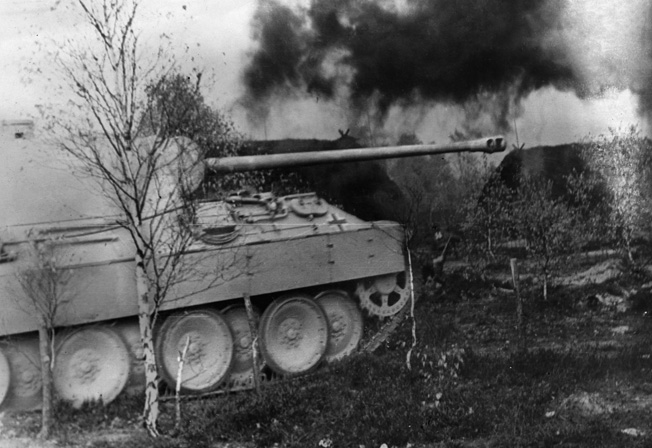
Model proposed to Hitler that he be assigned the LVI Panzer Corps for offensive operations, knowing that this would sit well with Hitler, who much preferred offense to defense. Thus, LVI Panzer Corps was transferred to Army Group North Ukraine on May 20; Field Marshal Busch did not protest Hitler’s order. The movement of the boundary resulted in a 47 kilometer reduction in Army Group Center’s sector, but this miniscule reduction came at a high price. As already noted, Army Group Center had reinforced LVI Panzer Corps heavily and these reinforcements were all lost with the transfer of the corps. Army Group Center lost 15 percent of its divisions, 23 percent of its assault guns, and a staggering 50 and 88 percent, respectively, of its artillery and tank strength.
Signs of looming troubles multiplied in June in Army Group Center’s sector. New Soviet units were identified and rumors that Marshal Georgi K. Zhukov, the architect of the successful defense of Leningrad and Moscow and the hero of Stalingrad, was in command of the forces being assembled were confirmed from prisoner interrogations as were the general objectives of the forthcoming offensive. These increasing signs of trouble, however, received only cursory interest at Army Group Center.
General Zeitzler convened a high-level meeting on the morning of June 14, 1944—a week after the combined U.S.-British invasion of Normandy—at OKH in Rastenburg in East Prussia. The meeting involved the chiefs of staff of the army groups and armies. They were to receive Hitler and OKH’s assessment (one and the same) of the situation and told what to expect during the summer of 1944. Zeitzler was somewhat apologetic for having brought the chiefs of staff of Army Group Center and its armies to the meeting since the subject would not be of particular concern to them––announcing that OKH had concluded that the Soviets would continue their offensive against the southern army groups, with Army Group North Ukraine absorbing the brunt of the Soviet offensive.
Zeitzler’s conclusion ranks as one of the most calamitous misreadings of enemy intentions in World War II. It was based mostly on preconceived ideas that brushed aside all indications to the contrary. In all fairness, it should be pointed out that most group and army commanders shared Zeitzler’s conclusion, at least until some disturbing signs became obvious in June. Through their excellent deception plan the Soviets had achieved one of the first requirements of a successful campaign––to get into the head of the opposing commander.
Army Group Center under Busch had become a place devoid of proper operational conceptions and served only as a transmittal station for Hitler’s orders. The Germans continued to believe blindly that the main offensive would take place against Army Group North Ukraine.
Busch flew to meet Hitler at the Berghof on the morning of June 22––Bagration’s D-day. Except for trying to get LVI Panzer Corps back, the meeting was apparently called to deal with routine matters.
Order of Battle
The final Soviet operational directive was provided to the front commanders on May 31; the offensive was to be launched on a 480-kilometer front from just south of Polotsk, on the boundary between Army Group Center and Army Group North, to Rogatchev, near the boundary between the Fourth and Ninth Armies. Stalin had assigned the code-name “Bagration” to the operation. Pyotr (Peter) Bagration was a fellow Georgian, a general who was mortally wounded in the Battle of Borodino against Napoleon in September 1812.
Marshals Zhukov and Alesandr M. Vasilevskiy were each responsible for operational planning, coordination, and direction of two fronts. Zhukov was assigned the two southern fronts, 2nd and 1st Belorussian, while Vasilevskiy had the two northern fronts, 1st Baltic and 3rd Belorussian.
Unlike many operational plans, the Soviet plan worked so well that it is not necessary to discuss it in detail as it unfolded as planned in the described operations. The initial tasks of the four fronts were to isolate and reduce four communications centers to the rear of the German lines: Vitebsk, Orsha, Mogilev, and Bobruysk. The operations against Vitebsk were primarily the responsibility of the 1st Baltic Front under General Ivan K. Bagramyan.
The 3rd Belorussian Front, under General Ivan Chernyakhovskiy, would assist by enveloping Vitebsk from the south with 5th and 39th Armies before heading toward Senno. Another assault group from the 3rd Belorussian Front, consisting of the 11th Guards and 31st Armies, would attack toward Orsha. Cavalry-Mechanized Group Oslikovskiy would undertake a rapid advance west past Senno. The 3rd Belorussian Front had the 5th Guards Tank Army in reserve.
The 2nd Belorussian Front, consisting of the 33rd, 49th, and 50th Armies under the command of General Georgiy F. Zakharov, would hit the center of 4th Army and eliminate the German bridgehead east of the Dniper River. These forces would then take Mogilev.
General Konstantin Rokossovskiy’s 1st Belorussian Front was to use two armies (3rd and 48th) east of the Beresina River and two armies (65th and 28th) and a Cavalry-Mechanized Group west of the Beresina. These forces would encircle Bobruysk.
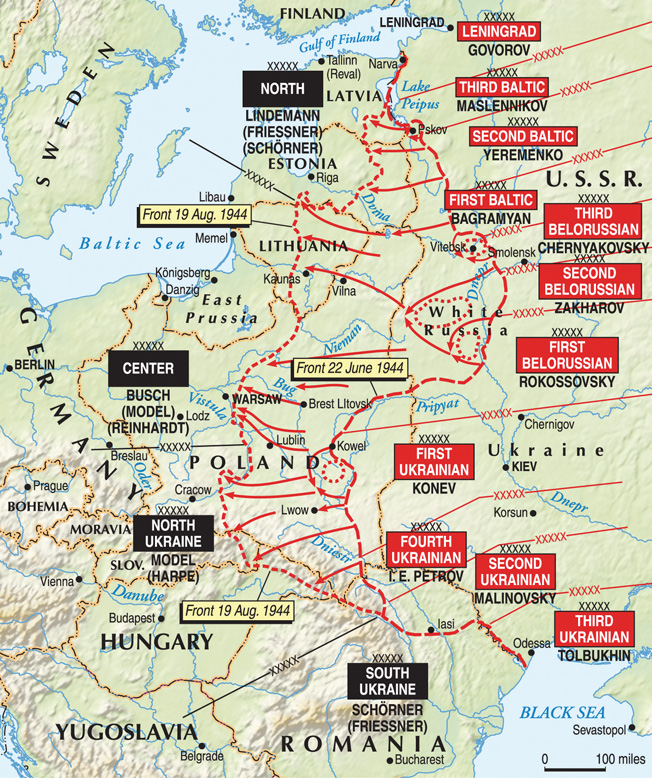
The breakthroughs were to be achieved by massive infantry-led attacks with heavy artillery and air support against the German lines on narrow fronts. It is estimated that 250 pieces of indirect-fire weapons per kilometer were used at each of the breakthrough points. When holes had been punched in the German lines, armored spearheads would rush through and encircle the communications centers by double envelopments.
The second phase of the Soviet operation involved deep armor-led drives against Minsk from both the northeast and southeast designed to isolate the 4th German Army. Strong forces (3rd Belorussian Front) would bypass Minsk on the north and head for Molodechno, while equally strong forces (1st Belorussian Front) would head for Baranovichi to the southwest of Minsk. These drives would not only isolate 4th Army but would block the escape routes from Minsk which were restricted by vast areas of forests and swamps.
On the German side, the far left flank was held by General Hasso-Eccard von Manteuffel’s Third Panzer Army from both sides of Vitebsk to near Polotsk where it tied into Hansen’s Sixteenth Army of Army Group North. On its right, Third Panzer tied into Fourth Army north of Orsha. Fourth Army, which held a 40-kilometer deep and 130-kilometer wide bridgehead east of the Dniper River, tied into Ninth Army north of Rogatchev. Ninth Army held a front that curved southwestward along the Prut and Dniper Rivers to the area south of Zhlobin where it bent westward over the Bersina River to the lower Pitch and Pripet. Second Army held the longest sector along the Pripet River to where it tied into the left flank of Army Group North Ukraine north of Kovel.
The Offensive to Minsk
An avalanche of Soviet forces struck Army Group Center in the morning of June 22, although there are some arguments about the start date. The first Soviet communiqué mentioned June 23 as the start date and most Soviet accounts use this date. It seems, however, that the Germans should be aware of when all hell broke loose and we have therefore used June 22 as the start date. It may be, as Chris Bellamy suggests, that some of the attacks began on June 22 but that the full fury was not unleashed until the 23rd. Field Marshal Busch, who was still in Germany to see Hitler, hurried back to his headquarters in Minsk.
As in Normandy, partisan forces were of great help to the attackers. The estimated 143,000 partisans in Belorussia had begun attacks against Army Group Center’s lines of communication on June 20 but paused when the Soviets launched diversionary attacks in the south. The reinforcements that the Germans sent south were allowed to proceed unmolested. When the reserves were turned around and sent north after the main blow fell on Army Group Center, the partisans went into action and virtually paralyzed traffic in the German rear area.
The main Soviet attacks proceeded according to plans. The 1st Baltic and 3rd Belorussian fronts quickly pierced the pulverized German front lines on both sides of the city of Vitebsk and proceeded with its envelopment. Third Panzer Army, on the left flank of Army Group Center, was caught completely by surprise by the Soviet 6th Guards Army and its front was torn open. In this phase of the operation the Soviets employed their vast air superiority primarily against German artillery, which was established in open positions near the front so that the guns could be used in a direct-fire role. This left the German guns very vulnerable to air attack.
On the second day of the operation, the Soviets again overwhelmed 3rd Panzer Army’s front north of Vitebsk and proceeded to encircle the city from the north, trapping five German divisions. Hitler’s (and Busch’s) fixation on a rigid defense and holding on to areas designated as “fortified places” began playing havoc with any efforts by the armies to mount a coherent defense.
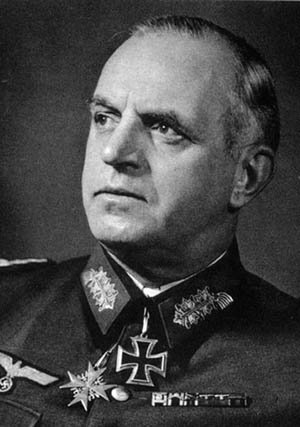
The 3rd and 2nd Belorussian Fronts were tearing through the Fourth Army’s front lines and heading for Orsha and Mogilev. A message from Busch reported that he saw no way of restoring the front of Third Panzer Army without giving up Vitebsk or receiving reinforcements; Hitler was not willing to give up Vitebsk. And OKH was not willing to bring units north from Army Group North Ukraine because they still expected the main attack to fall there. Busch himself was not willing to take units from Weiss’s Second Army for the same reason. Decision-making had become paralyzed.
On June 24, 4th Army’s left flank corps was beginning to disintegrate under powerful attacks, and the 1st Belorussian Front penetrated the 9th Army’s lines near its northern boundary. The Soviets reached Senno in the 3rd Panzer Army sector where they turned south behind 4th Army’s left flank. Hitler finally gave permission to withdraw four of the five divisions trapped at Vitebsk, but it was too late.
General Tippelskirch, commander of Fourth Army, requested permission to abandon the bridgehead east of the Dniper River but Busch refused. The following day Tippelskirch took matters into his own hands and ordered the withdrawal. On June 25, Ninth Army, in danger of having its main force trapped between the Dniper and Beresina Rivers, also requested permission to withdraw before it was destroyed. Busch, set on a rigid forward defense, again refused.
By the morning of June 26, Army Group Center appeared to be falling apart. It had committed all its reserves without stopping the Soviet advances. Vitebsk was encircled and the forces there were lost. Third Panzer Army was driven back on the Dvina and Ulla Rivers, 80 kilometers west of Vitebsk. The right flank corps of 3rd Panzer Army—badly mauled remnants of five divisions—was in full flight west and south of Senno and had lost contact with the rest of the army.
In Ninth Army’s sector, the Soviet armies were pushing toward Bobruysk and fanned out on both sides of the city. The lead Soviet elements in the south were only five kilometers from the city on June 26. Repeated requests by Ninth Army to be allowed to withdraw to Bobruysk and the Beresina River were denied until the morning of June 27. But, before the army could react to this approval and thereby establish contact with the Fourth Army, new orders arrived forbidding any withdrawal.
OKH and Busch changed their minds again in the afternoon. General Hans Jordan, commander of Ninth Army, was given permission for a breakout to the north, but the permission was accompanied by an order to hold Bobruysk. The speed of events had by now overtaken the vacillating attitude of the army group and OKH. Bobruysk was encircled by 10 Soviet divisions, trapping two German corps of about 70,000 men in or east of the city. Panic broke out among the thousands of leaderless German troops in Bobruysk as they milled around in confusion. Ninth Army Headquarters, located outside the pocket, transferred its one remaining operational corps to the Fourth Army and withdrew to Marina Gorka where it tried to hold open an avenue of escape for the Fourth Army using parts of the 12th Panzer Division. The Ninth was the first German army to be ground to pieces in the Soviet offensive.
Things were not going much better for the other armies. General Rokossovskiy’s 1st Belorussian Front was also driving toward Minsk and the city of Slutsk to its south. Zakharov’s 2nd Belorussian Front forced a crossing of the Dniper north of Mogilev on June 26 and General Tippelskirch was forced to consider a withdrawal of his army by a single road through the swamps and forests between the Prut and Beresina Rivers. There was only one bridge across the Beresina, but intercepted Soviet radio messages to their tank spearheads revealed that they had orders to secure the crossing.
Tippelskirch sent a blunt message to Busch on June 27 which basically asked if the army group wanted Fourth Army to fight its way west or be encircled. Tippelskirch was told that if Fourth Army had to fall back, it was to establish a line on the Prut River but the “fortified places” of Mogilev and Orsha were to be held at all costs. By the time he received this message, the Soviets were already in Orsha. Tippelskirch ordered a withdrawal when the Soviets began enveloping his southern flank.
Fourth Army Headquarters moved from Belynichi to Beresino on June 28 over the same road the army would have to use––a road that was clogged by burning vehicles and dead horses from Soviet air strikes; it took nine hours to cover the 30-mile distance.
When Tippelskirch reached Beresino, he found a message from Busch ordering him to quickly get behind the Beresina River. An order from OKH (Hitler) gave permission to withdraw from Mogilev. That place had not been heard from since the previous day and had already fallen to the Soviets.
In his report to General Zeitzler on June 28, Busch noted that Jordan’s Ninth Army had collapsed, the Fourth was retreating, and Third Panzer had only one corps left of the original three. Despite this disastrous situation, Busch promised to fully implement an order that had come in from Hitler during the night to hold a line in the vicinity of Beresino––despite the fact that the remnants of Third Panzer and Ninth Armies were already west of the line.
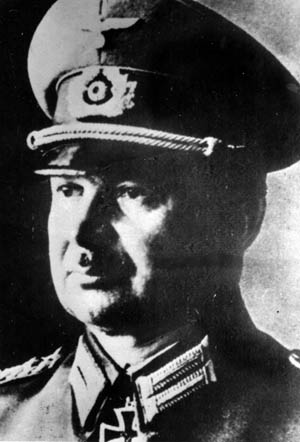
It was finally dawning on OKH that the offensive against Army Group Center was on a greater scale than expected, with Minsk as a probable objective, but still they clung to the belief that another, more powerful offensive would strike Army Group North Ukraine. OKH proposed to pull Army Group North back to a line running from Dvisk to Riga in order to shorten the front and gain divisions to use in the Army Group Center area.
Hitler ignored the proposal and instead sacked Busch and appointed Field Marshal Model to command both Army Group Center and Army Group North Ukraine. The new command structure pleased the commanders and staffs of Army Group Center. Model was held in high esteem, and with him in command of both army groups, it would make it easier to shift forces between them. However, it did nothing to correct the space/force ratio, which the OKH proposal would have done.
Soviet aircraft knocked out the only bridge across the Beresina River on June 29 while the 1st and 3rd Belorussian Fronts were outflanking what was left of Germany’s Fourth Army from the north and south; the Soviets captured both Borisov and Slutsk.
The fate of Fourth Army was sealed on June 30 when Soviet tanks and artillery came within range of the bridge over the Beresina. Model was desperately trying to get some divisions from Army Group North, which could only spare these forces by a pullback, especially of its right flank, and this was something Hitler would not contemplate. He simply ignored Model’s request.
The tanks and motorized units from Rokossovskiy’s 1st Belorussian Front drove past Slutsk and Borisov toward Baranovichi and Molodechno. This caused Jordan’s Ninth Army headquarters to leave Marina Gorka and head for Stolbtsy, halfway between Baranovichi and Minsk. It hoped to hold a crossing over the Neman River, the last escape route from Minsk where a panicky situation already existed. Trying to organize a force of stragglers to defend the town proved impossible. The 5th Guards Tank Army was getting perilously close in the north. Jordan directed his only remaining panzer division against Stolbtsy from Marina Gorka but the Soviets had already captured the town.
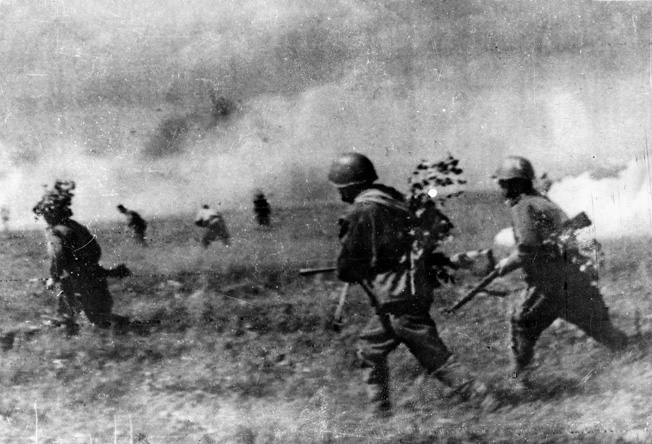
With the exception of a rear guard, Tippelskirch’s Fourth Army was across the Beresina River while his headquarters hurried to Molodechno to try to hold the railroad line running west from that town. Troops from the 1st and 3rd Belorussian Fronts took Minsk on July 3.
Ninth Army tried unsuccessfully to open the bridge at Stolbtsy while the Soviets drove toward Baranovichi the following day. After that, the only German troops to escape were individuals and small groups that made their way through the dense Nalibocka Forest. Ninth Army managed to hold the pocket around Minsk open long enough for perhaps 10,000-15,000 of its troops to escape. Jordan’s headquarters had ceased to function by the time it reached Baranovichi and could no longer exercise control of the divisions arriving from Second Army. The headquarters was moved to the rear to reorganize and re-equip.
There are no other words to describe the state of Army Group Center after 12 days of combat than that it was shattered. Fourth Army’s strength at the beginning of the operation was 165,000 men. It had lost 130,000 of these by the time Minsk fell. Third Panzer Army lost 10 divisions. In all, Army Group Center lost 25 divisions.
Westward from Minsk
Past experience led the Germans to believe that the Soviets would pause to resupply and reorganize. The Soviets had advanced 200 kilometers since the start of the offensive and this was farther than they had moved in one leap on previous occasions.
Field Marshal Model hoped to establish a defensive line between the cities of Baranovichi and Molodechno. To do so, he needed additional forces to close two gaps on his left flank. An 80-kilometer-wide gap had developed between the right flank of Sixteenth Army of Army Group North at Polotsk and the left flank of Third Panzer Army. A gap of similar size had opened between the troops of Fourth Army trying to establish a line at Molodechno and the right flank of Third Panzer. There was an acute danger that the Soviets could encircle and destroy what was left of Third Panzer Army. This would open the road to Riga and East Prussia and pin Army Group North against the Baltic.
General Georg Lindemann, commander of Army Group North, had no troops to spare to help Model seal the gaps as long as he was forced to hold Polotsk. On July 3, Lindemann was given permission to fall back a short distance from Polotsk and ordered to attack southwestward to establish contact with Army Group Center. Lindemann replied that with the few troops made available by the short withdrawal he could still not attack; he was promptly relieved by Hitler who appointed General Johannes Friessner to take command. Friessner set about to stretch his front westward, thereby narrowing the gap between Army Group North and Army Group Center to about 30 kilometers. Friessner intended to close this gap with a southward attack by three divisions. The attack never materialized.
Nor did the pause in the Soviet offensive that the Germans had expected occur. STAVKA ordered the offensive to continue without cessation on a broad front. The 1st Baltic Front was ordered to advance toward Dvinsk; the 3rd Belorussian Front was aimed at Mododechno and the Neman River; the 1st Belorussian Front advanced on Baranovichi and then on to the city of Brest; and the 2nd Belorussian Front remained behind in the Minsk area to conduct mopping-up operations.
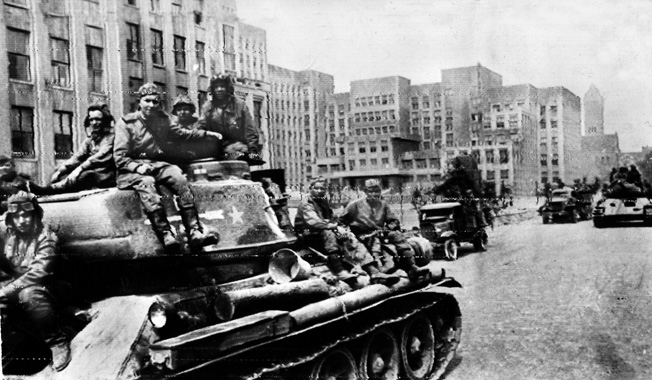
The rapid Soviet advance on a wide front nullified Model’s plans to establish a defensive line from Mododechno to Baranovichi. On July 6, the 3rd Belorussian Front had penetrated the narrows south and east of Mododechno and the road to Vilnius was wide open. Weiss’s Second Army was able to hold Baranovichi for only a couple of days before it fell to the Soviets on July 8.
General Friessner’s attack from the north ran into the 4th Shock and 6th Guards Armies from the 1st Baltic Front advancing toward Dvinsk. Friessner
now proposed that Sixteenth Army be allowed to withdraw to the Lithuania position, from Kraslava to Ostrov. Hitler relented but his solution––withdrawal halfway to the Lithuania position––only made things worse.
With no prospects of stopping the Soviets anywhere, Model requested a meeting with Hitler on July 9. Hitler was adamant about not withdrawing Army Group North. Instead, he promised to immediately make available to Model a panzer division from Germany and two divisions from Army Group North, followed by two more divisions later. With these reinforcements, Third Panzer Army was to attack northward to close the gap between it and Army Group North.
Nothing came of this plan. General Friessner informed Hitler on July 12 that he intended to attack south toward Third Panzer Army but emphasized that the effort would be useless since the 1st Baltic Front under General Bagramyan would continue its westward drive. He pointed out that his own front was unstable and he urged a withdrawal of Army Group North to a line running from Riga to Kaunas. If his proposal was not acted upon, Friessner asked to be relieved of his command. Hitler rejected Friessner’s proposal and countered with a plan to assemble five panzer divisions behind Kaunas to drive north to close the gap between the two army groups.
The following day, Model informed OKH that he would try to stop the Russians along a line from Kaunas along the Neman River to Brest, but to do so he needed the panzer divisions that Hitler had planned for the northward drive. Even counting the new units arriving, he would have only 16 divisions near full strength to counter 160 Soviet divisions and brigades. At a conference at Rastenburg on July 14, Hitler agreed to let Model have the divisions to first stop the Soviet offensive and then use them offensively to plug the gap between the two army groups. The logical solution of withdrawing Army Group North was again rejected.
The Germans managed to restore some semblance of order in the Army Group Center area after the middle of July. The Fourth Army and Third Panzer Army were able to establish a line from Ukmerge through Kaunus and along the Neman River south of Grondo while the Second Army continued to pivot its left flank as it withdrew toward Bialystok. Ninth Army was still in the rear reorganizing and preparing defensive works to protect East Prussia. The Germans were helped immeasurably by the fact that the Soviets, after advancing more than 320 kilometers, were outrunning their supplies. Railroads, bridges, and roads had to be rebuilt or repaired in the area devastated by the offensive before another sustained drive could be undertaken.
On July 17, the Soviets paraded 57,000 German prisoners through Moscow to underscore the extent of their victories. It also served to refute German claims that they had conducted a planned withdrawal from Belorussia. Finally, it provided evidence to counter claims in Western newspapers that the Soviet offensive was made easy because of the large number of German troops tied down in France. In fact, it was not until July 18 that the Americans captured St. Lo, just 30 kilometers from Omaha Beach. The Soviet offensive had covered over 320 kilometers by July 18, while the U.S. 1st Army and British 2nd Army––with about one million men ashore––had become bogged down in the treacherous hedgerows of Normandy.
Two days after the Americans captured St. Lo, the famous unsuccessful attempt on Hitler’s life was made at Rastenburg by an anti-Hitler conspiracy within the Army. The conspiracy was quickly shattered and resulted in a number of new officers being placed in key posts, mostly on the Western Front. The only changes that affected the Eastern Front were not a result of the attempt. On July 21, General Heinz Guderian was appointed successor to Zeitzler, who had reported sick three days earlier. Two days later, General Ferdinand Schoerner, commander of Army Group South Ukraine, and General Friessner exchanged assignments.
Soviet Pressure on the Flanks
Army Group Center radio monitors intercepted a Soviet order to their tank units north of Vilnius which raised the distinct possibility of another and greater catastrophe on the Eastern Front. The messages instructed the Soviet units to attack in the gap between Army Groups Center and North. This actually initiated the next phase of the Soviet offensive––pressure against the flanks as the advance in the center began to lose momentum as a result of supply problems. Model told OKH that he could not assemble an attack force in time to stop the Soviet drive and that Army Group North had to manage on its own.
The conditions in Army Group North were dire. It was trying to get into the Lithuania positions but these positions were already beginning to crack. Friessner had no reserves left. He warned that the front was about to collapse.
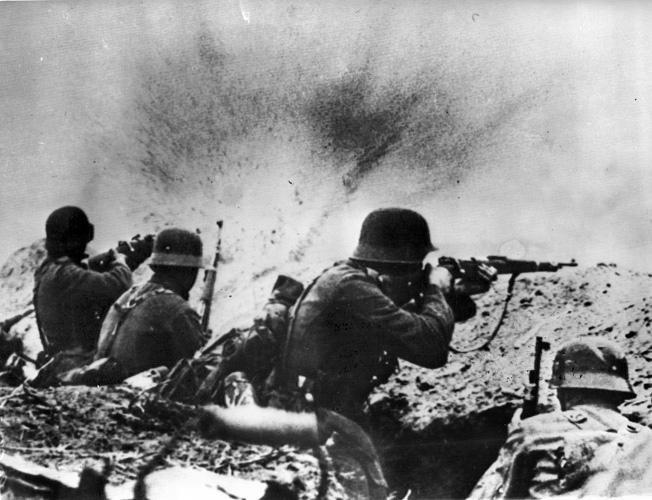
The dangerous situation resulted in a meeting between Hitler, Hermann Göring (commander of the Luftwaffe), General Zeitzler, Field Marshal Model, and General Friessner. The only forces Hitler had to offer were two assault gun brigades intended for Finland. This was one of those rare occasions where Göring spoke up against Hitler’s strategy. He observed that the only way to generate sufficient forces and keep Army Group North from being encircled was to withdraw behind the Dvina River and establish a line between Riga and Kaunas. Hitler agreed that this was the simplest solution but noted that this would cost Germany the Latvian oil, Swedish iron ore, and Finnish nickel. As it turned out, all these would be lost within a month. Hitler insisted that Army Group North stay in place by every possible means. Zeitzler thereupon offered his resignation. When this offer was refused, he reported sick.
The Soviet pressures against the northern flank of Army Group Center took the form of a drive into the gap between that army group and Army Group North with Riga as the objective. General Bagramyan’s 1st Baltic Front was given two fresh armies––2nd Guards and 51st––just brought in from the Crimea.
The pressure on the southern flank, opposite Army Group North Ukraine, was delivered by Marshal Ivan S. Konev’s 1st Ukrainian Front with 10 armies, three of them tank armies. Rokossovskiy’s 1st Belorussian Front, on Konev’s right, had been reinforced by a Guards army and a tank army as well as the 1st Polish Army, a force of four divisions. The armies of these two fronts were positioned for a three-pronged drive: to Brest and Lublin in the north; to Lwow in the center; and Stanislav in the south.
The offensive against Army Group North Ukraine began on July 13 (the Lwow-Sandomierz Offensive) and resulted in weeks of bloody fighting. Converging tank columns reached the Bug River 50 kilometers west of Lwow on July 18, catching six German divisions of XIII Corps in a pocket east of Lwow. An attempt to break out to the south was made on July 22; only 5,000 managed to escape. First Panzer Army still held Lwow and its front to the south but was in danger of being encircled.
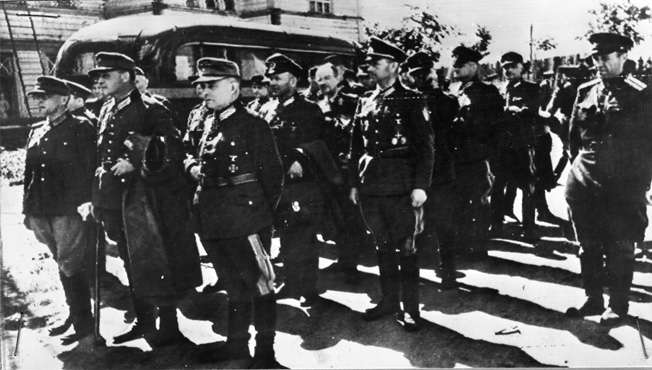
Army Group North Ukraine withdrew under pressure to the Bug River because of the breakthrough in the south and because the neighboring Second Army on its north was in retreat toward Brest, where it went into defensive positions on July 22. The Soviets forced the Bug and created a bridgehead on the west bank at Chelm, Poland, on July 20. From this crossing, the Soviets drove on to Lublin 70 kilometers to the west. They bypassed that town and headed northwestward in the morning of July 23.
In the north, Third Panzer Army was hard pressed around Kaunas. Between July 18 and 21, the 1st Baltic Front had created several bridgeheads across the Neman River while other forces were pushing the left flank of Third Panzer Army south. The division on the left flank began to disintegrate under continual attacks by six divisions of 2nd Guards Army. A 60-kilometer gap was formed on the left flank of Third Panzer Army, and 2nd Guards Army poured through it on July 22, its spearheads reaching a point 70 kilometers
behind Third Panzer by evening. Third Panzer was virtually ineffective, its frontline strength having fallen to 13,850 men.
Hansen’s Sixteenth Army, on the right flank of Army Group North, had withdrawn to the Lithuania position on July 19 but it could not hold, so Friessner ordered a further 15-kilometer withdrawal on July 22. Friessner warned OKH that further withdrawals would be necessary to save the army group from destruction.
Serious gaps had formed in the German front in the Army Group North Ukraine sector. First Panzer Army was still holding at Lwow but Soviet forces had pressed the Fourth Panzer Army to the vicinity of the San and Vistula Rivers. There was no longer a continuous front. The armies requested permission to withdraw behind the Vistula and San Rivers without delay to avoid encirclement and destruction. Model agreed with these requests and he wanted to bring both army groups (Center and North Ukraine) behind the Vistula since the Soviets were moving rapidly north between the Vistula and Bug toward Siedlce, threatening to cut off Second Army and because the 1st Baltic Front had thrust past Kaunas and Third Panzer Army in the north.
Guderian and Hitler did not agree. A directive prepared for Hitler’s signature on July 23 ordered Model’s two army groups to halt where they were while Army Group Center was to create a solid front on a line from Kaunas via Bialystok to Brest while assembling strong forces on both flanks. These “strong” flank forces were to strike north and south and reestablish contact with the neighboring groups. All army groups were promised reinforcements.
In the last week of July, the Soviet armies were still rolling west through a German front that was more or less shattered from the Baltic to the Carpathians. On July 24, several crack Soviet armies were closing on the San River 80 kilometers west of Lwow between Jaroslaw and Przemysl, which the 4th Soviet Tank Army crossed on July 25, forcing First Panzer Army to withdraw from Lwow toward the Carpathians on July 27. The Fourth Panzer Army of the same army group retreated behind the Wieprz River southeast of Lublin, but the Soviets had torn open the German front for a distance of over 100 kilometers in the south and almost as much in the north. Fourth Panzer Army was given permission to retire behind the Vistula River.
Second Army of Army Group Center was trying to establish a defense at Brest but the 2nd Soviet Tank Army was racing north toward Siedlce in its rear on July 24 while two Soviet armies hit its southern flank. Headquarters, Ninth German Army, was again sent to the front to try to defend Siedlce and the approaches to Warsaw. It was given four divisions but three of these were still in transit. Rokossovskiy’s armored columns easily penetrated the thin screening line established by Ninth Army and reached the east bank of the Vistula at Deblin and Pulaway. Motorized Soviet columns were pouring west from Panevezhis behind Manteuffel’s Third Panzer Army. On July 25, Second Army reported that it could no longer hold Brest but OKH prevaricated so long in giving permission to retire that it was virtually encircled. Ninth Army, with all the forces it could muster, tried to defend Warsaw and hold Siedlce long enough for the divisions coming from Brest to escape.
Bagramyan’s motorized columns, which had passed Third Panzer Army’s left flank, turned north and, in an 80-kilometer night dash, captured Jelgava and cut the last rail link to Army Group North. Third Panzer Army, itself in trouble, did not have adequate forces to halt the Soviet advance. Nine rifle divisions and two Guards tank corps fell on the right flank of Third Panzer Army south of Kaunas on July 29. On the same day, Rokossovskiy’s tanks drove north past Warsaw. Soviet forces were within 11 kilometers of the city in the southeast and had captured Wolomin, 13 kilometers to the northeast.
Third Panzer Army’s flank collapsed on July 30 and the Soviets advanced to Mariampol, only 30 kilometers from the East Prussian border. General Georg-Hans Reinhardt, the Army commander, sought permission to withdraw from Kaunas where two of his divisions were being encircled and pulverized. Model said he could not grant that permission and it was useless asking OKH. Taking matters into his own hands, Reinhardt withdrew his troops during the night behind the Nevayazha River, 15 kilometers to the west.
On July 31, Soviet mechanized forces reached the Gulf of Riga, trapping Army Group North. In the Warsaw area, the 8th Guards Army seized a bridgehead near Magnuszew while 1st Tank Army began ferrying troops and tanks across the Vistula at Baranow.
Soviet Onslaught Crests
On the positive side for the Germans, there were signs that the Soviet offensive was running out of steam. They did not try to expand on their breakthrough to the Baltic, the tanks in the Warsaw area ground to a halt––apparently short of gasoline––and Chernyakovskiy’s 3rd Belorussian Front did not move against East Prussia through the gap between Mariampol and Kaunas, although it captured Vilkavishkis, 15 kilometers from the border. The Soviets, having advanced in some places more than 240 kilometers since the capture of Minsk and about 560 kilometers in all, had finally outrun their supplies. Logistics had dammed the flood.
The Warsaw uprising (not to be confused with the uprising in that city’s Jewish Ghetto, which took place in April-May 1943), under General Tadeusz Bor-Kommorowski, began on August 1. That is a story in itself and outside the scope of this article. Suffice it to say that it was not in Stalin’s interest to assist the Poles in the city and he had a convenient excuse in the fact that his armies had outrun their supplies. Nevertheless, they certainly had the ability to push through to assist the insurgents had they wanted to.
The energetic Model took advantage of the Soviet slow-down. He managed to seal their bridgeheads across the Vistula and establish a continuous front from around Shaulyay to the Vistula near Pulawy. But the 670-kilometer front was thinly manned––just 39 German divisions and brigades faced one-third of the Soviet strength on the Eastern Front.
Model sent Hitler a somewhat optimistic report on August 3. After completing a number of containment operations and counterattacks with newly arrived units by August 15, he would assemble sufficient forces to attack and reestablish contact with Army Group North.
The most urgent issue on the Eastern Front in early August was to keep Army Group North from collapsing. General Ferdinand Schoerner told Hitler on August 6 that his group would hold until contact with Army Group Center was restored––as long as that happened soon, since his exhausted troops were under relentless pressure. He told Guderian that if the relief did not come quickly, he would pull back to a line from Riga to Kaunas––if that were still possible.
August 16 was an eventful day. The 3rd Belorussian Front threw three armies against the right flank of Third Panzer Army just as Model began his relief attack from Shaulyay toward Army Group North with two understrength panzer corps. Then Model was ordered to take over as commander on the Western Front. General Reinhardt, as senior army commander, took over the army group.
Two panzer brigades from Manteuffel’s Third Panzer Army captured Tukums on the Gulf of Riga on August 20 and the encirclement of Army Group North was broken; the corridor to Army Group North along the gulf coast was widened to 30 kilometers over the next few days. A suggestion by Reinhardt to withdraw Army Group North was supported by Guderian but refused by Hitler.
As August ended, it was evident in the zones of Army Groups North, Center, and North Ukraine that the Soviet armies had taken up a defensive posture, thereby bringing the offensive to a close. The Soviets had a large bridgehead on the Vistula at Baranow and smaller ones at Magnuszew, Serock, and Rozan.
The Soviets let the uprising in Warsaw burn itself out after an unprecedented level of viciousness without offering any meaningful assistance and without allowing the use of Soviet airfields for long-range U.S. aircraft flying supply missions for the insurgents until September 10, when it was too late. The insurgents in the shattered city finally capitulated to the Germans on October 2.
Costs and Consequences
It is difficult to establish accurate casualty figures for Bagration––they vary from account to account. Some include all three army groups (North, Center, and North Ukraine) while others do not. Most accounts seem to agree that Bagration cost the German Army about a quarter of its Eastern Front manpower. Estimates for German losses range as high as 300,000 killed or missing, 120,000 captured, and 250,000 wounded.
The Soviet losses were also substantial––possibly as high as 178,000 killed or missing (some sources report all casualty categories as high as 750,000)––although other estimates place the number of killed and missing at around 70,000. Both sides lost substantial quantities of equipment, but it was by far more injurious for the Germans.
Some of the debacle can be traced to Hitler’s intransigence in not making military decisions dictated by logic. He repeatedly disregarded entreaties from his commanders to make withdrawals and adjustments that would have improved his armies’ chances to counter the Soviet offensive. In his quest for loyalty, he had failed to appoint the best officers to key posts and kept shifting commanders between commands, most often to the detriment of the units.
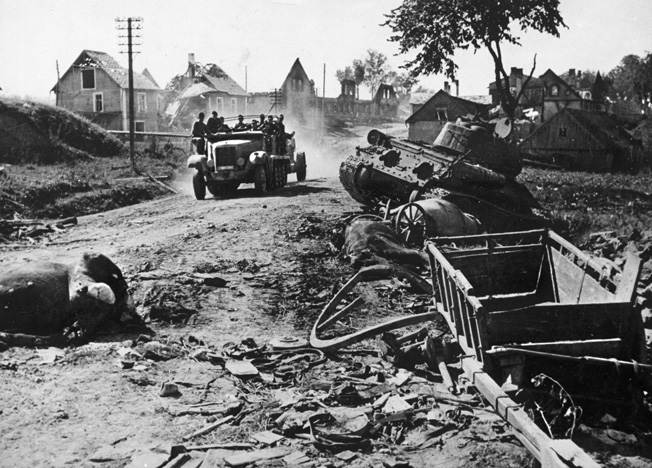
The German Army never recovered from the disaster between Vitebsk and Warsaw. The virtual destruction of three armies of Army Group Center was the most calamitous defeat suffered by the Germans in World War II, and the loss of experienced officers and noncommissioned officers could not be made good at this stage of the war. The Soviets could sit calmly on the Vistula, reorganizing and resupplying their forces, supremely confident of their ability to drive to the Oder and Neisse Rivers and Berlin. The demoralized Germans––now coping with a full-fledged two-front war––could only mount a weak defense along the Vistula. Operation Bagration had sealed their fate. n
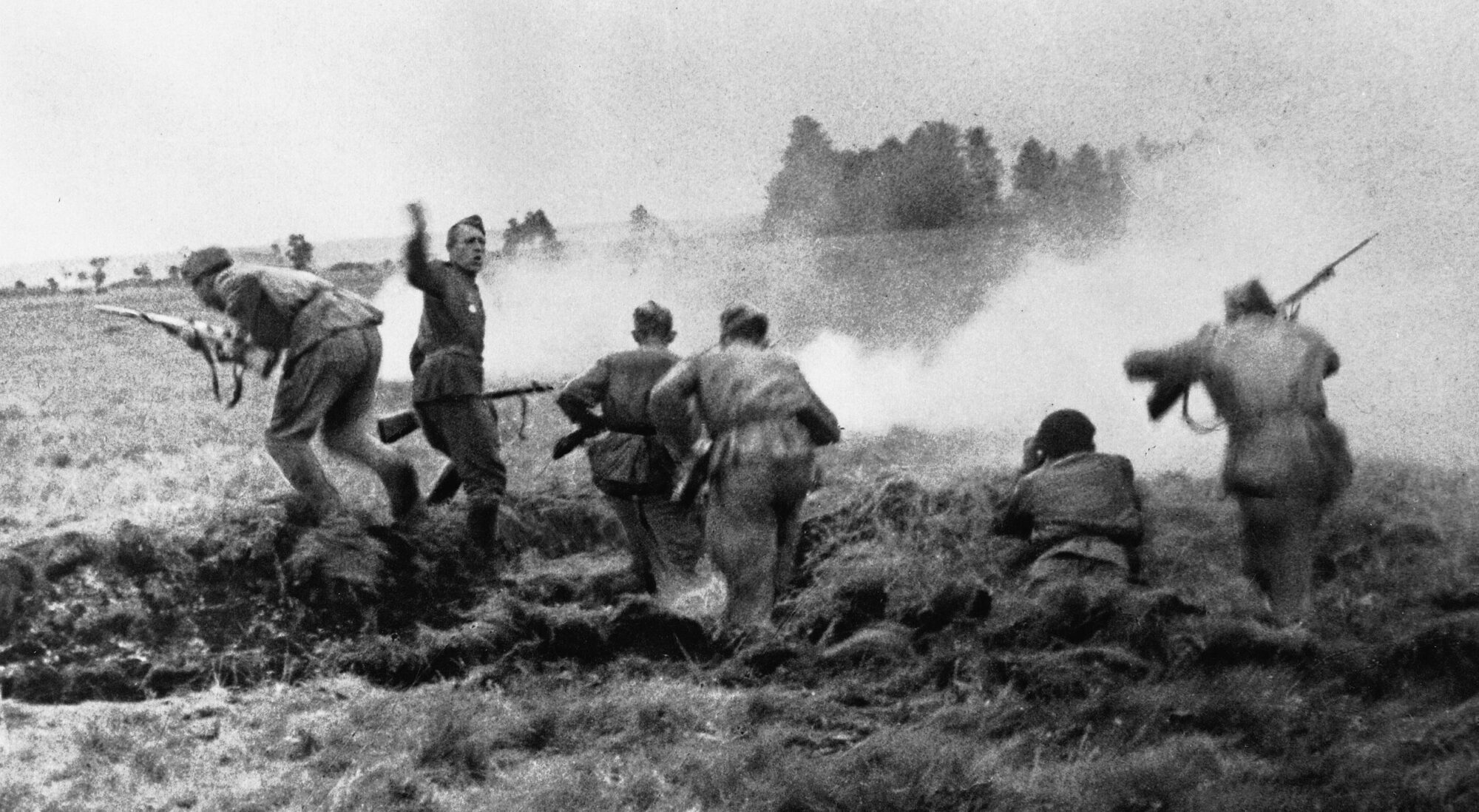
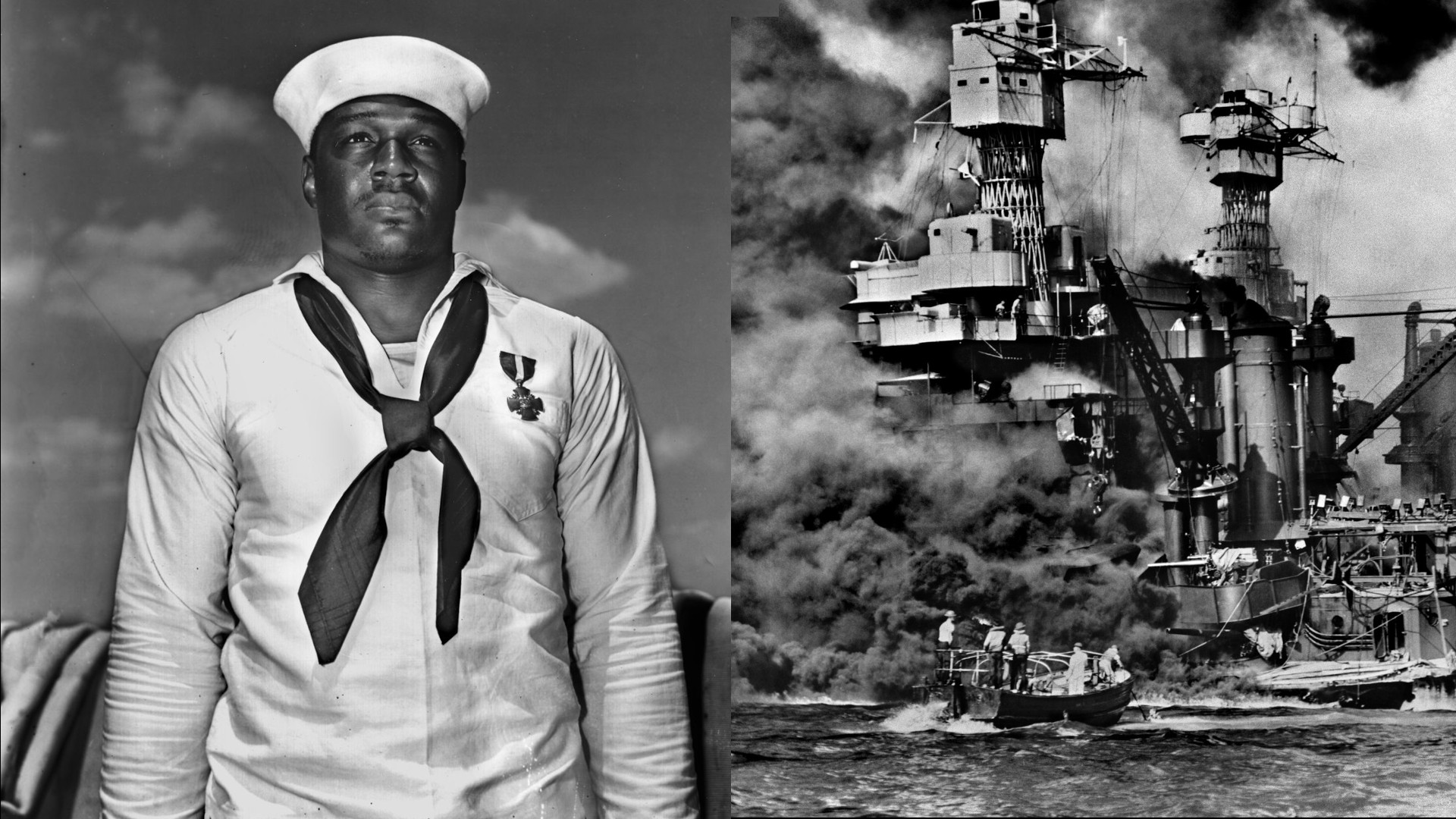

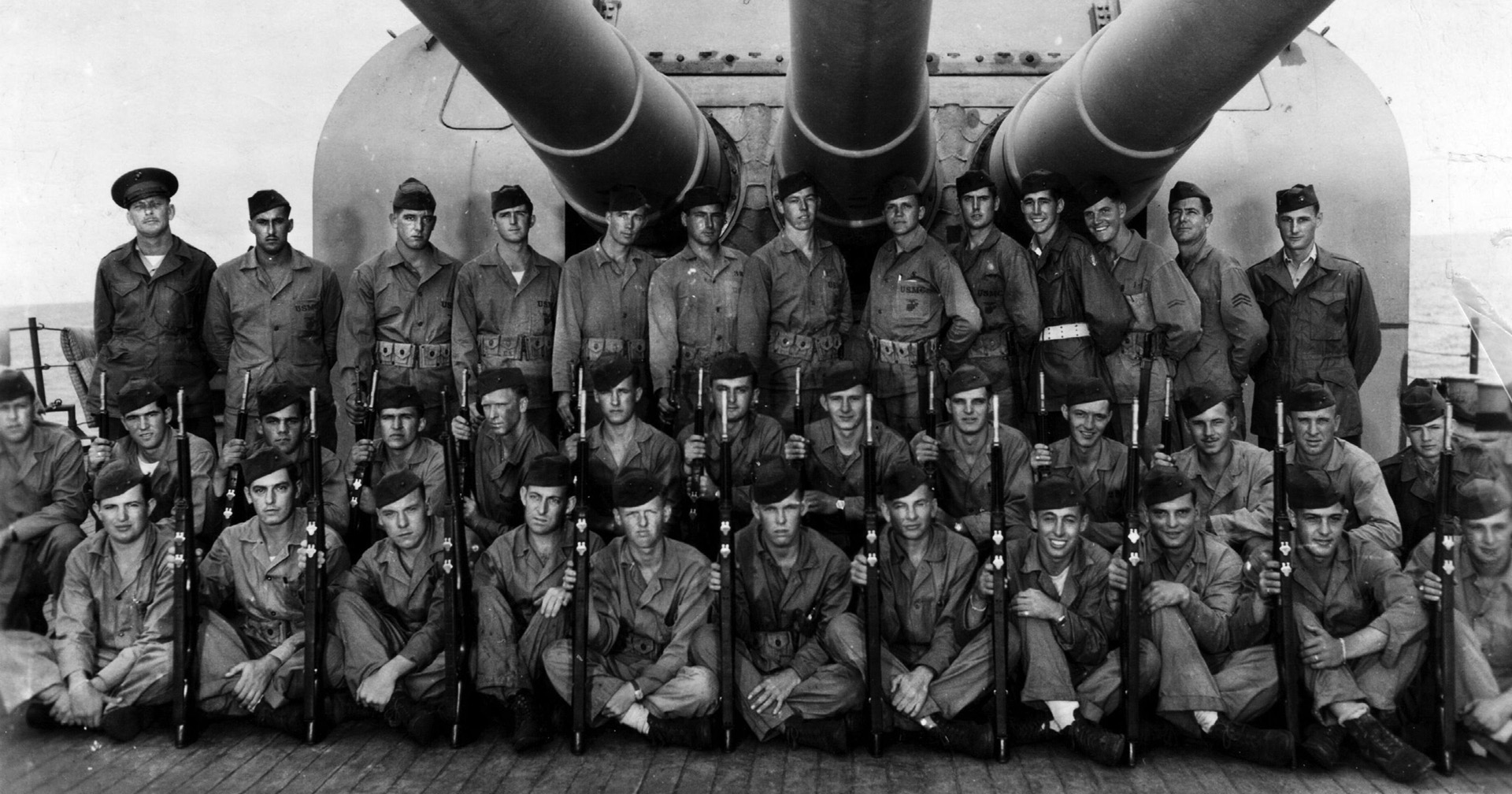
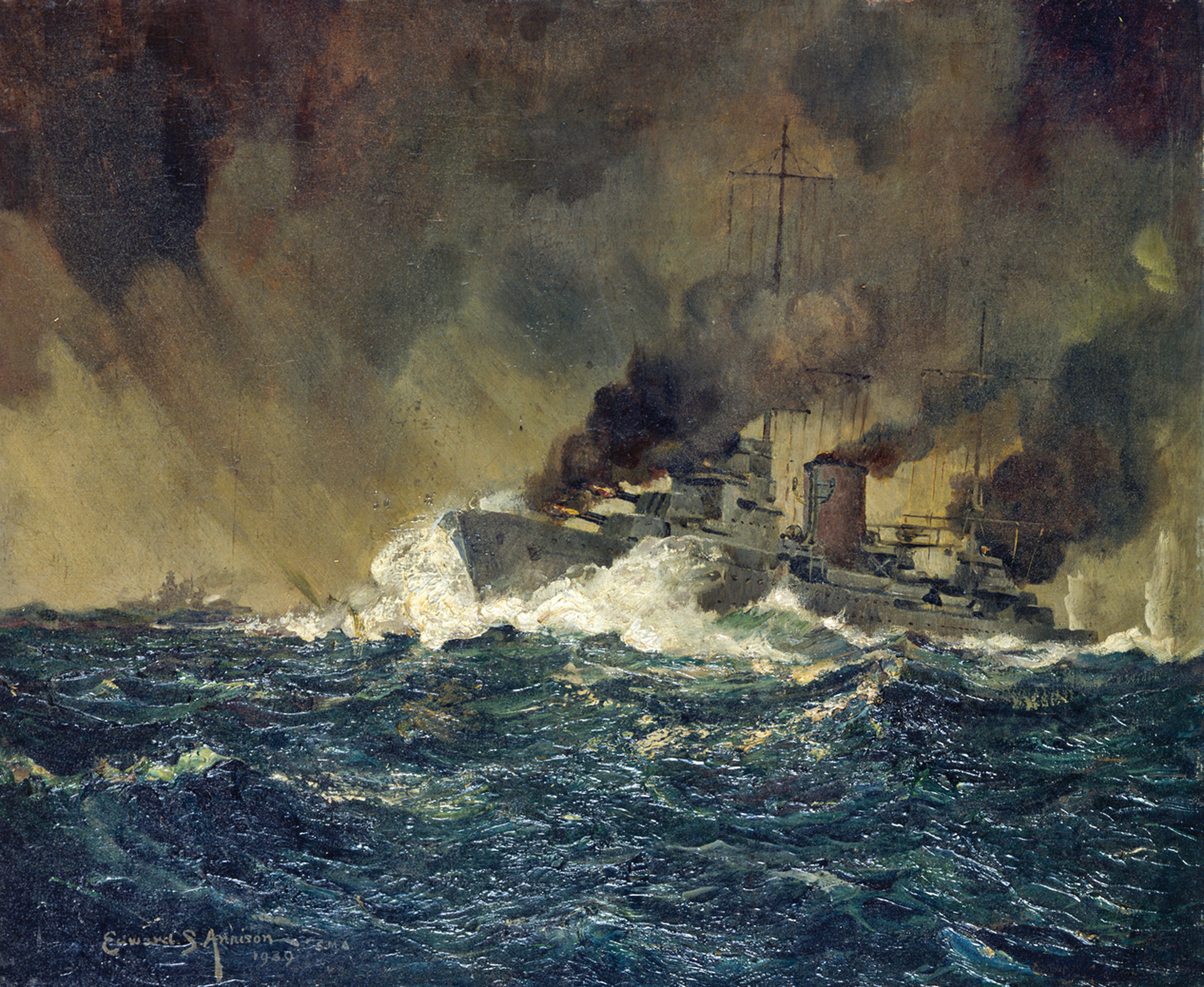
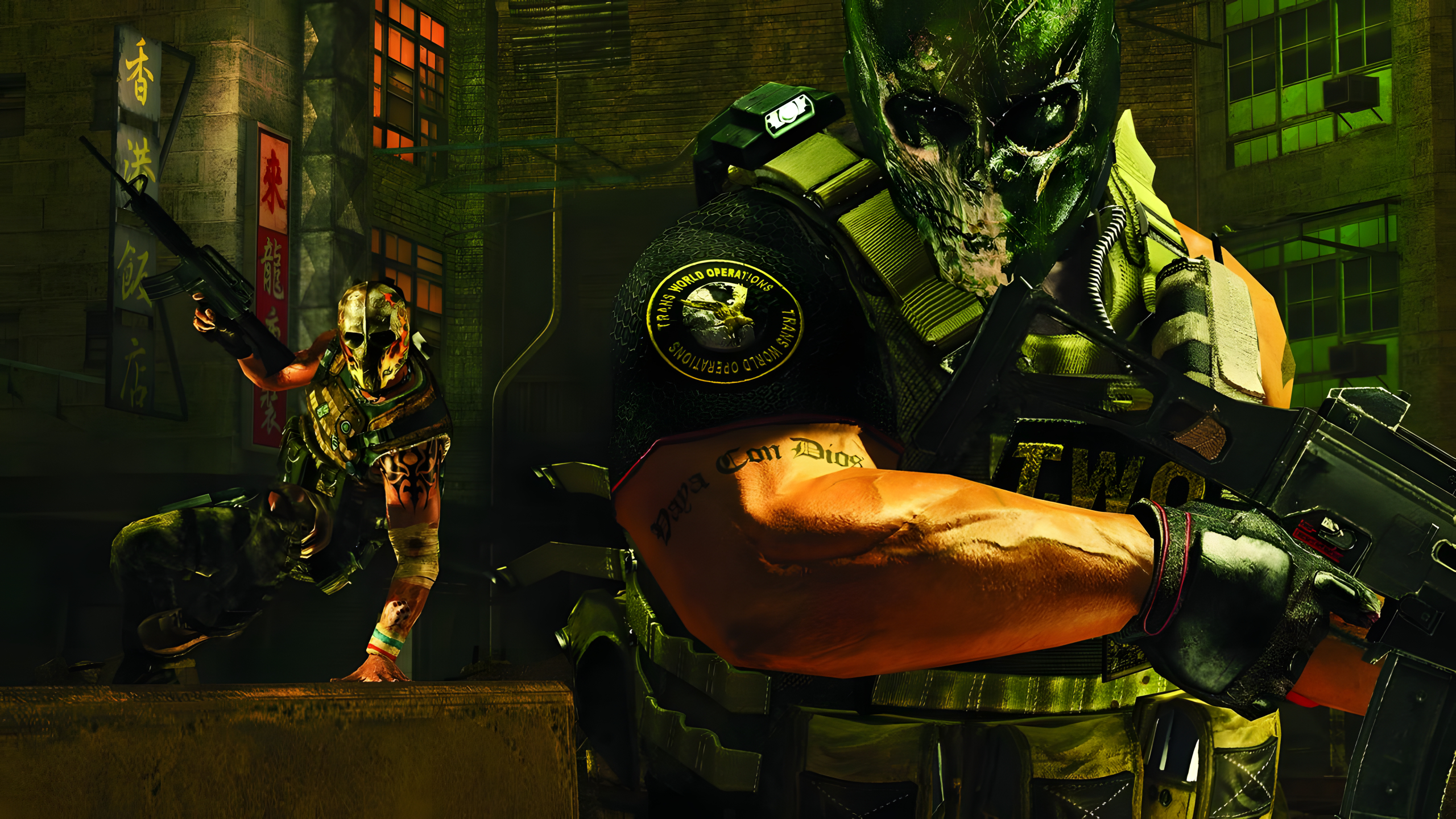
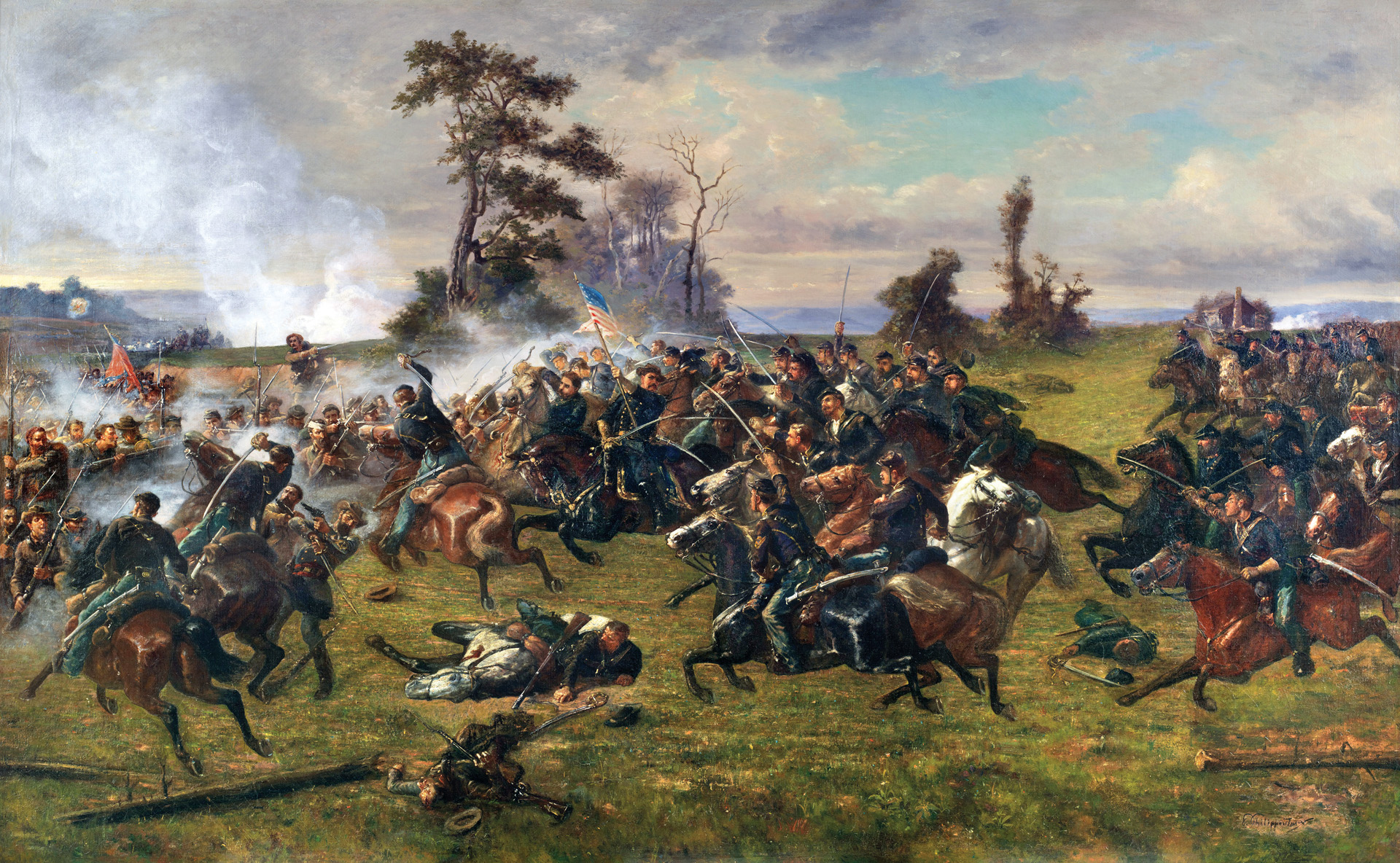
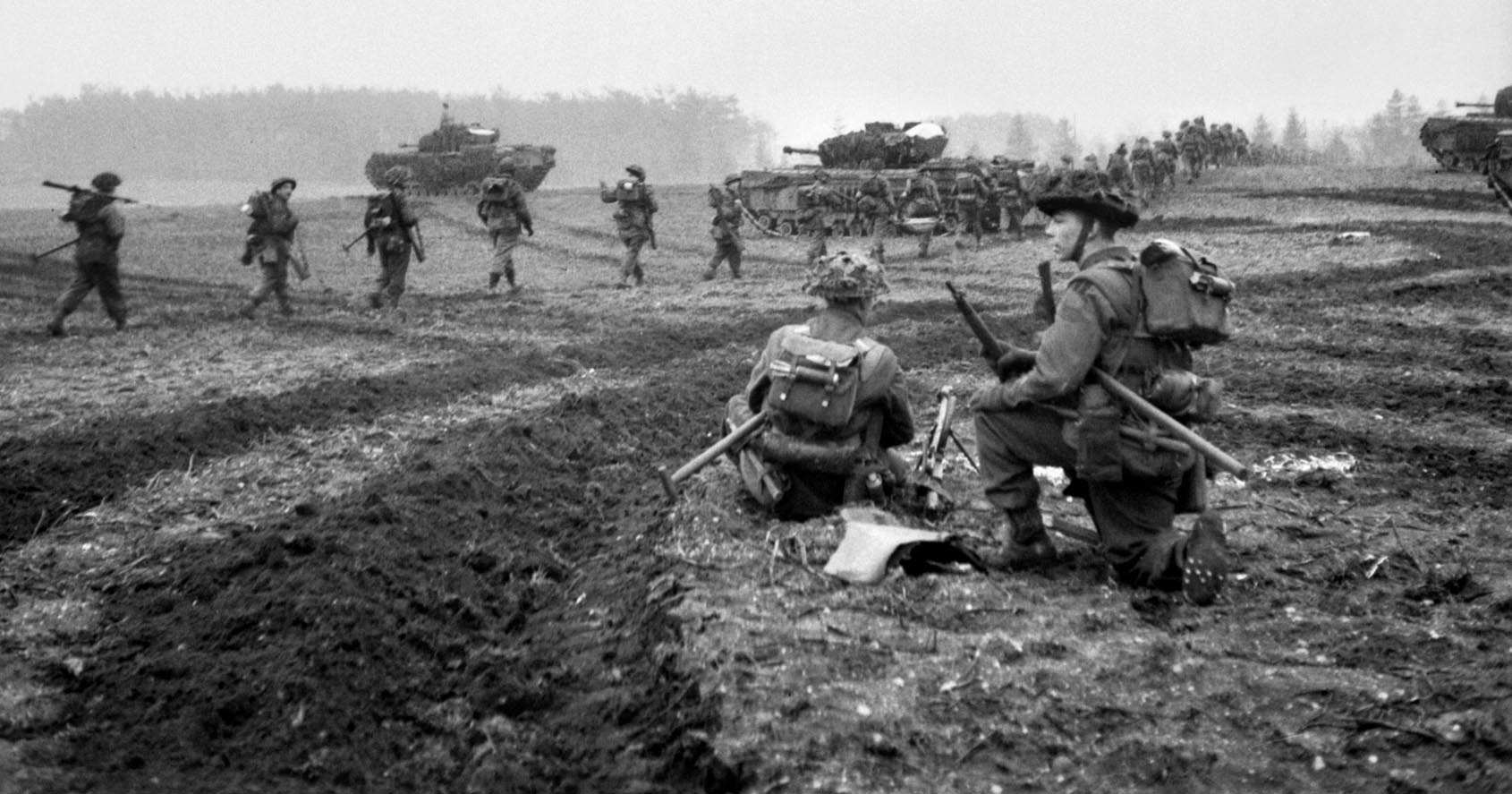
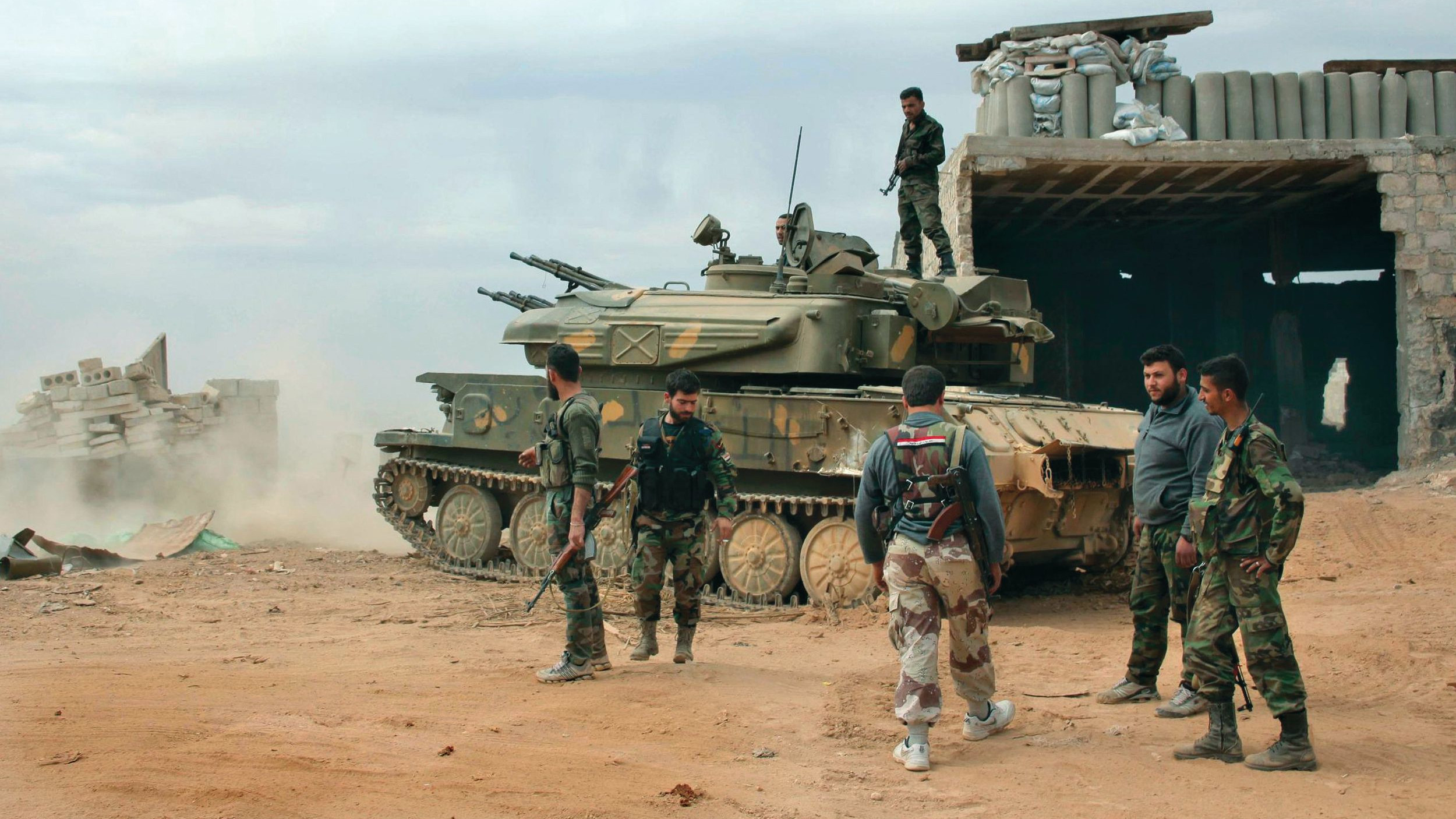
There is a typo on your map on this page. Estonia and Latvia have been swapped. Other than that, the map looks spot on with OB’s positioned spot on. Cheers